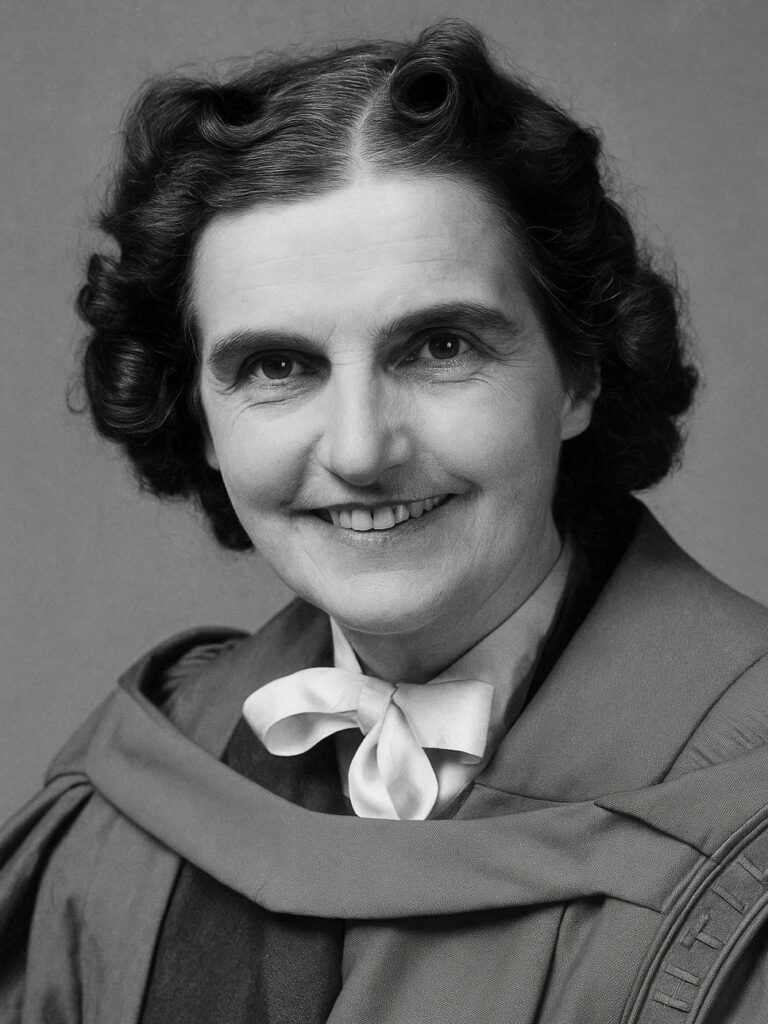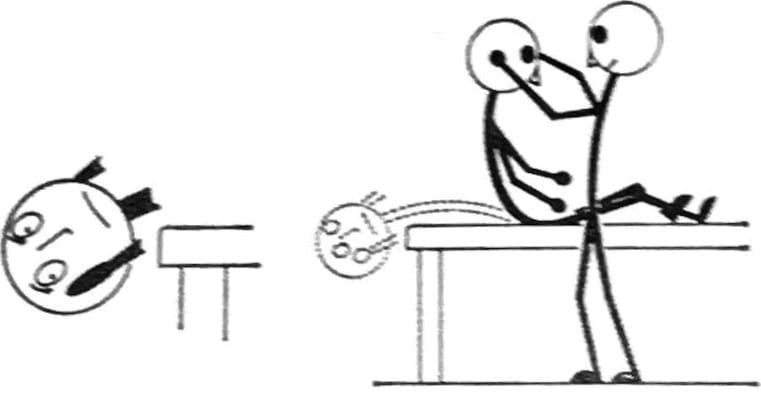Margaret Dix

Margaret Ruth Dix (1902-1991) was an English neuro-otologist.
Margaret Dix was a British neuro-otologist whose clinical research fundamentally shaped the modern understanding and diagnosis of vestibular disorders. She is best known for co-developing the Dix–Hallpike manoeuvre, a diagnostic test for benign paroxysmal positional vertigo (BPPV), in collaboration with Charles Skinner Hallpike.
Born in 1902, she was educated at Sherborne School for Girls and the Royal Free Hospital School of Medicine for Women, qualifying MBBS in 1937. Initially pursuing surgery, her career trajectory changed following a severe facial injury during the Blitz in 1940, which ended her surgical aspirations. After rehabilitation under Sir Archibald McIndoe, she redirected her path toward neuro-otology.
In 1945, Dix joined the Medical Research Council’s Otological Research Unit at the National Hospital for Neurology and Neurosurgery, Queen Square. Under Hallpike’s mentorship, she researched vestibular disorders, deafness in ex-servicemen, and inner ear pathology. Their seminal 1952 publication detailed the pathophysiology and bedside diagnosis of vertigo, including the eponymous Dix–Hallpike test.
Dix became Doctor of Medicine in 1957, Honorary Consultant at the National Hospital in 1965, and continued contributing prolifically to the field until her retirement in 1976. She published over 100 articles and was awarded the Royal Society of Medicine’s Norman Gamble Research Prize in 1980. She died on 9 December 1991, aged 89.
Biography
- 1902 – Born in England, the daughter of a Shropshire rector.
- She attended Sherborne School for Girls and Royal Free School of Medicine in London.
When asked why she chose a medical career, Margaret would reply: “Because a woman cannot be a clergyman!”
- 1937 – MBBS, Royal Free Hospital School of Medicine; began training as a surgeon. Her supervisors recognised her competence and allowed her to perform tonsillectomy procedures.
- 1940 – Injured in Blitz, ending surgical career. Margaret suffered facial disfigurement, a torn eardrum and fragments of glass lodged in her eyes which prevented her from continuing as a surgeon.
- 1945 – Joined MRC Otological Research Unit, National Hospital, Queen Square
- Alongside otologist Charles Skinner Hallpike, she studied and practiced neuro-otology – a new branch of medicine at the time – and carried out research on deafness in ex-servicemen.
- 1952 – Co-authored landmark paper describing BPPV and Dix–Hallpike manoeuvre
- 1957 – Earned Doctor of Medicine
- 1965 – Appointed Honorary Consultant, National Hospital, and worked there until her retirement in 1976
- 1980 – Awarded Norman Gamble Research Prize
- 1991 – Died December 9, aged 89
Medical Eponyms
Dix-Hallpike Test (1952)
First described in 1952 by Dix and Charles Skinner Hallpike (1900-1979), this positional test is used to diagnose benign paroxysmal positional vertigo (BPPV). The manoeuvre provokes nystagmus and vertigo by rapidly positioning the patient’s head to stimulate otolithic debris within the semicircular canals. It remains a fundamental diagnostic tool in vestibular assessment.
They described a clinical bedside manoeuvre in detail, “Lagerungs Manoeuvre”, known now as the Dix-Hallpike test, to provide an immediate diagnosis of BPPV

Peep-Show technique for pure tone audiometry (1947)
Diagnosing deafness in children under the age of six is challenging because pure tone audiometry sounds are meaningless to young children and require explanation beyond their understanding.
Dix and Hallpike aimed to solve this problem by designing an apparatus called the “Peep-Show”, to enable young children to reliably respond to sounds. The apparatus consisted of a lamp and loudspeaker, and a box containing hidden pictures.
- The tester shows the child that when the lamp and loudspeaker activate, the child can make the pictures appear by pressing a switch. After the child does this several times, the lamp is removed, and now only the loudspeaker activates.
- A child who can hear the sound, will still press the switch when the sound occurs, to reveal the picture. A child who cannot hear the sound, will not.
- The test allowed deafness to be identified and quantified in young children, enabling special education to commence at an early age.
Major Publications
- Dix MR, Hallpike CS. The peep-show: a new technique for pure-tone audiometry in young children. Br Med J. 1947; 2(4531): 719-23. [Peep-Show technique]
- Dix MR, Hallpike CS. The pathology, symptomatology and diagnosis of certain common disorders of the vestibular system. Ann Otol Rhinol Laryngol. 1952; 61(4): 987-1016. [Dix-Hallpike Test]
- Dix MR, Hallpike CS. The pathology symptomatology and diagnosis of certain common disorders of the vestibular system. Proc R Soc Med. 1952; 45(6): 341-54
- Cawthorne T, Dix MR, Hallpike CS, Hood JD The investigation of vestibular function. Br Med Bull. 1956;12(2):131-142.
References
Biography
- Ramirez-Gil LS, Espinosa-Arce CB. From Injury to Innovation: Margaret Dix’s Pioneering Work in Neuro-Otology. Cureus. 2024 Nov 5;16(11):e73094
- Biography: Margaret Ruth Dix (1902-1991). Plarr’s Lives of the Fellows Online. Royal College of Surgeons of England.
- Margaret R Dix. Portraits – Queen Square archives
Eponymous terms
- Lanksa DJ, Remler B. Benign paroxysmal positioning vertigo: classic descriptions, origins of the provocative positioning technique, and conceptual developments. Neurology 1997;48;1167.
- Maranhão-Filho P, Nandi R, Maranhão ET. Margaret Dix, Charles Hallpike and the ‘Lagerungs’ Manoeuvre. Arq Neuropsiquiatr. 2018 Aug;76(8):563-565
- Baloh RW. Vertigo: Five Physician Scientists and the Quest for a Cure. Oxford University Press. 2016: 187
Eponym
the person behind the name
Studied at Univerisity of Cambridge - BA MB BChir. British doctor working in emergency medicine in Perth, Australia. Special interests include primary care and emergency medicine.

